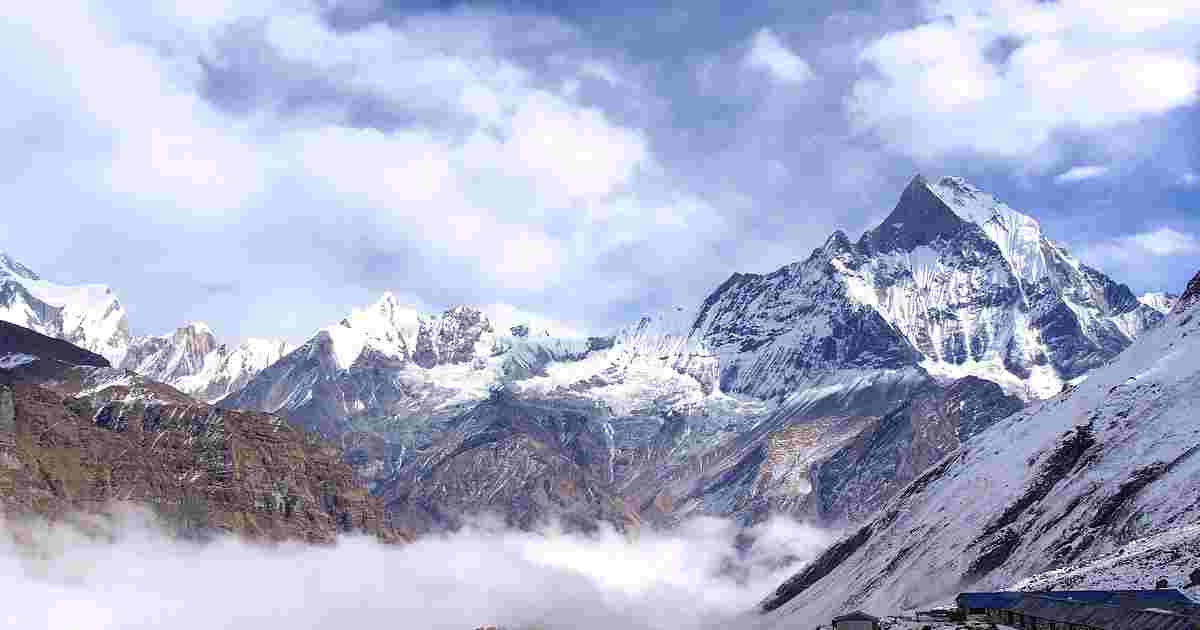
I can remember looking at pictures of the Himalayas while thumbing through books and magazines as a kid. The world-famous mountain range made regular appearances throughout my life in geography classes, history books and television documentaries.
So, by the time I made my first trip to Nepal a couple years ago, I was eager to see with my own eyes the legendary peaks that I had learned of.
You can imagine my disappointment when after two visits to the country I still had not seen them.
If you’ve ever been to Kathmandu, Nepal’s capitol, you might be able to guess why. Kathmandu is a busy, bustling city of a densely packed couple million people. It kicks up an extraordinary amount of dust and pollution that hangs thickly over the valley most of the year. All my time in Nepal had been spent in Kathmandu, and only once or twice during my visits did I see a tiny glimpse of a snow-capped peak appear like a mirage through the fog, only to disappear as quickly.
Despite having never truly seen the Himalayas, I never doubted they were there.
While I accepted their existence as a fact, my curiosity about them dimmed as the days passed and I simply stopped looking for them. I even joked with my Nepali hosts about the Himalaya’s being as mythical as the abominable snowman that supposedly inhabits them.
When the time arrived to fly home, after boarding the plane I found I had been given a window seat. Hoping to get a good view of the sprawling city as we rose off the tarmac, I was glued to the window like a kid looking into a toy store. But it wasn’t the city that took my breath away, it was the Himalayas.
Like a visual tsunami, they burst forth as we rose above the clouds in all their glory. The size and scope of them truly shocked me. Their total dominance of the landscape, for as far as the eye could see, left me feeling smaller than I’ve ever felt before. There was simply no basis for comparison, unchallenged and seemingly eternal in their existence. Tears stung my eyes as the beauty and majesty of these mountains super-exceeded my greatest expectations. The sheer size and magnitude of the range seemed to defy gravity and nature itself. For 15 minutes, one awe-inspiring peak after the other reached up to us from below before our flight trajectory finally robbed us of the view.
As I sat savoring the experience, I felt the familiar stir of God’s spirit in my heart as a I sat there.
Psalm 90:2 “Before the mountains were brought forth, or ever You had formed the earth and the world, even from everlasting to everlasting, You are God.”
A day is coming when we will all see God as He is.
Whether you believe or not doesn’t change that truth. All of us shall meet our Creator.
And like my occasional childhood encounters with information about the Himalayas, we too have had our moments in life when the existence and reality of God entered via conversation, book story, religious event or a movie. Often, those bits of information were forgotten. Some were tucked away in our memory for future consideration; like when we reach the age when we are seeking answers to the deeper questions of our existence.
Yet even as we find this desire within us, we are often discouraged by the clouds that obscure our view. The world is a proverbial Kathmandu; layers of spiritual dirt and darkness kicked up by humanity, blocking our capacity to see or really understand God at all. Many have a time or two during their lives when we get a peek at the ‘peaks’ of God. A moment of clarity brought on by some life-defining moment that opens our eyes to Who God is. They may even leave us with a strong conviction that God exists, out there somewhere.
But even with those moments, those revelations, we often discover life has a way of demanding our attention on such a level, that even though we may have concluded God is real, we simple stop looking for Him. We stop expecting Him to break through the fog of existence anymore.
A day is coming when we will finally and truly see God. When this life is over, and the cloud of sin and darkness is lifted we will see Him with perfect clarity. An old hymn puts it this way, “faith shall become sight”. The Bible says it another way, “we shall see him as He is” .
This spiritual tsunami, this revelation of who He is, will super-exceed our wildest imaginations and we will be utterly overwhelmed by His being. The glory of his holiness, majesty and power will leave us breathless.
But like any tsunami, we would be swept away by this revelation. As God said to Moses, “…for no man shall see Me, and live.” The Bible says for a sinful person, someone who has lived a life consistently breaking God’s laws, to come into the undiluted presence of God would be disastrous.
So how could seeing God for who He is, coming into His presence, be a good thing?
Because the core message of the Bible is this. God, seeing man lost and dead in our sins, left the glories of Heaven, took upon Himself human form, and stepped down into the cloud of human sin and darkness through His Son Christ Jesus. He lived a sinless life, died a sacrificial death for mankind, and rose again in victory over sin, death and hell. He then ascended to heaven, where He rules and reigns today.
It is because Christ is there now, reigning at the right hand of God in heaven, having washed our sins away through His death on the cross, that we can look forward to that day when we see Him and stand before Him as He is.
The Apostle John wrote in 1 John 3:1, “Behold what manner of love the Father has bestowed on us, that we should be called children of God!”
As awe-inspiring as the revelations of God will be, equally astounding will be the grace He has shown us in saving us from our sins and enabling us to see Him and know Him as He is.
And unlike even the mighty Himalayas, His love and life towards us will go on from everlasting to everlasting.
By Pastor Tim Mattox
Paphos Calvary Chapel
www.calvarycyprus.com









